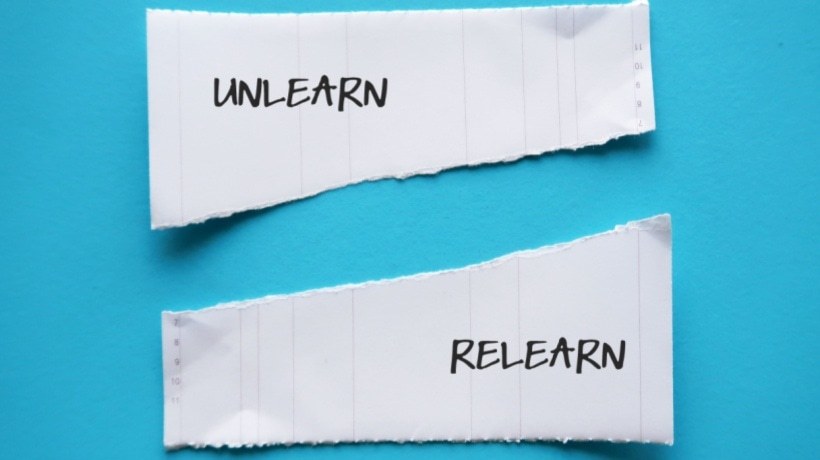The Role Of The Instructional Designer: Who Are They And What Exactly Do They Do?
Instructional Design and the Instructional Designer’s profile are integral and indispensable to the burgeoning eLearning space. Before we take a closer look at the layered and ever evolving role of the Instructional Designer, here’s a brief historical perspective about the origins of Instructional Design:
During the mid-1940s, training programs were developed during World War II: The US Air Force produced hundreds of training films and filmstrips marking the initiation of technology for educational and training purposes.
Over the course of the 1950s and 60s, methodologies for instructional learning material continually evolved and the "Instruction Design Model" was conceived in 1965 by Robert Gagné; the model, also known as "Nine Events of Instruction", continues to be relied on as guidance to create a broad framework for eLearning.
“Creativity in the workplace starts with creativity in education.” — Adobe
What Do We Really Understand By "Instructional Design"?
Connie Malamed explains that the fundamental purpose of Instructional Design is to "identify the skills, knowledge and the attitude gaps of a targeted audience and to create, select and suggest learning experiences that close this gap". Complementing the scope and purpose of this definition, Christopher Pappas further elaborates that
“Instructional Design aims to compress the learning process and fill the gaps in our knowledge in the most effective way."
The Instructional Design competencies have been identified by the IBSPI (International Board of Standards for Training, Performance, and Instruction) and although this isn’t an exhaustive list, key skills can be broadly categorized under Professional foundations, Planning & Analysis, Design & Development, and Implementation & Management.
In context of this background, let’s take a look at some of the key responsibilities an Instructional Designer undertakes while working on eLearning projects:
1. Planning And Analysis.
Building blocks of designing instruction for an eLearning course entails a thorough "needs assessment" of the targeted demographic: Learners’ goals, concrete understanding of their expectations from the course, likely study environment, ease or comfort level with a variety of technologies, etc. Based on the relevant data collated, an Instructional Designer would then "design a curriculum", identify which methodologies would be used to deliver curated content, and zero-in on existing and emerging technology that will form part of the final course.
2. Design And Structure.
Primarily, the success to an effective and appealing eLearning course boils down to the fluidity and structure of the content –despite availability of top-notch content and seamless technology– to ensure that learners remain engaged and courses see a minimal attrition rate. The Instructional Designer’s prime focus would be on how content is required to be organized: Flow of information is sequential and smooth without losing context, moving from complex, simple, or elaborate concepts in an uncluttered manner that caters effectively to a wide variety of learners, an essential hallmark of eLearning courses.
3. Collaboratation With Subject Matter Experts.
Christy Tucker explains that an Instructional designer, in close collaboration with the respective Subject Matter Expert (SME), will be responsible for not just curating the most relevant content to include in the course, but will be required to devise modes of assessment and interactions (tests, quizzes etc.) to ensure optimum efficacy of the eLearning course.
4. Multimedia Tools.
Within just one segment of an eLearning course, a user can find themselves going through a gamut of tools: Infographics, mini-videos, graphs, links to sources, PDF extracts etc. It would be awfully easy for it to become overwhelming for a first time learner who is required to consume this wide range of data. And here’s where an Instructional Designer comes in the picture: In collaboration with the tech-team, design team and the Subject Matter Expert, the Instructional Designer would brainstorm in context of aesthetics (size, font, design, and experience), placement, frequency of use of tools, content format, and more, to ensure learners are not overwhelmed by the experience.
5. Implementation And Management.
The Instructional Designer, in addition to all the above, is also required to maintain relationships with a wide range of interested parties on the team (faculty, Subject Matter Experts, students, tech teams) with the least amount of friction as possible. This would require enormous amounts of communication of all kinds (writing, speaking, listening, presenting) as this job essentially personifies "collaboration" in order to keep teams running as well-oiled machines, implementing decisions after thorough discussions, and managing people with enmeshed roles; a visual review tool like zipBoard could seamlessly complement this process of collaboration ensuring these goals are met with relative ease.
What Kind Of Evolution Could The Role Of The Instructional Designer Role Undergo In The Future?
Justin Ferriman believes that an Instructional Designer in contemporary times would need to wear multiple hats and juggle roles far more frequently than in the past. Times have changed when proficiency in a couple of core skills sufficed; Instructional Designers must develop skills that allow them to don the roles of a facilitator, researcher, and innovator amongst others.
In recent years, there has been explosion in the number of people accessing alternative forms of learning: Wide disparity in age groups, work experience levels, learners at different career stages has been constantly fluctuating.
“We have to personalize education, not standardize it.” ― Sir Ken Robinson
As the learner/user profile begins to evolve, the role of the Instructional Designer is bound to evolve at a rapid pace as well. Connie Malamed is of the view that in the future, Instructional Designers, in addition to creating courses for a specific user profile, would also begin to play a crucial role in enabling learning via online communities, social media technologies, curating content, and providing guidance to faculty and teaching experts on how to generate more relevant content.
According to Shauna Leblanc Vaughan, it will be key for Instructional Designers to acquire familiarity with user experience (UX) to holistically comprehend learners’ interactions and responses to content when transmitted over a range of devices.
Other experts in the field like Sahana Chattopadhyay are of the view that there is a massive transformation due in the field of Learning and Development over the next few years impacting learners, instructors, and every other professional that plays a role in curating, creating, and designing learning content. Wearable technologies, open resources like MOOC, the rise of self-learners with a consumerist mindset, morphing of the traditional mode of learning with eLearning will blur the demarcations between the two and professionals like Instructional Designers would have to take on the mantle to design and create experiences that are seamless across different ecosystems.
Given the pace of change in this continually evolving field, Instructional Designers that can keep up with the change and transformation that’s just over the horizon, have immense career growth to look forward to.









